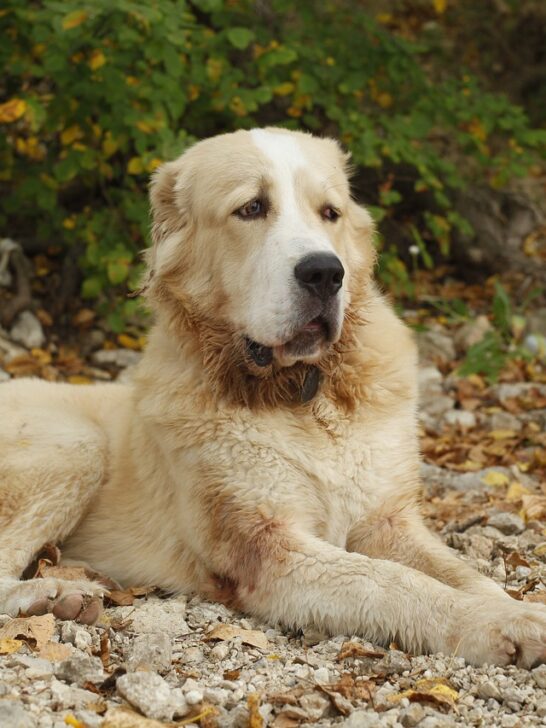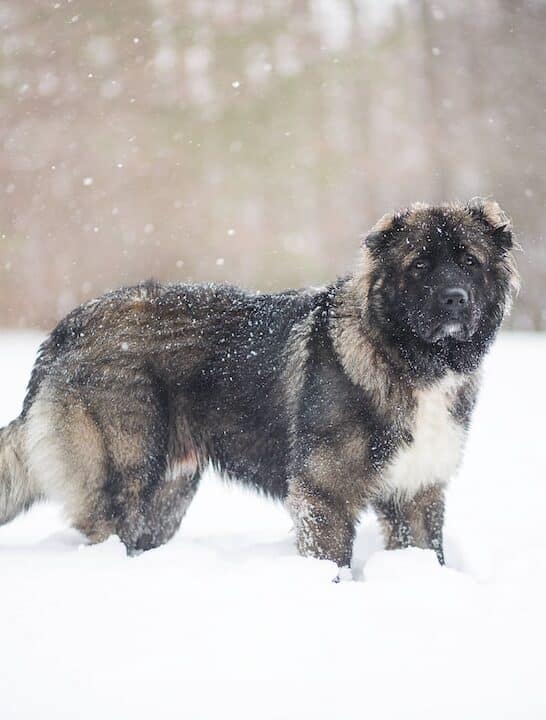The Great Pyrenees Vs. The German Shepherd: Which One Is The Right Addition To Your Family?
If you’re considering introducing a four-legged friend to your family, then it’s important to make sure that you choose the right breed of dog.
Along the way of shortlisting your final breeds, you’re likely going to find that you end up getting stuck between two, and seeing as you’ve clicked on this article, we’re assuming that you’re currently torn between the Great Pyrenees and a German Shepherd.
Choosing which breed of dog to go with doesn’t have to be stressful or overwhelming, especially when you have all the knowledge you need to make the most well-informed decision.
Generally speaking, even though these two breeds of dog may seem to be very different (especially if we’re talking about their looks) these two breeds of dogs have their own needs and quirky personalities – and we’re here to help you decide which one is right for you and your lifestyle.
Below, we’re going to be taking a deep dive look into these two loveable breeds of dog. From their personalities, unique traits, all the way to their temperaments and potential health problems – we’ve made sure to cover all bases so that you’ll be able to finally make a choice between the two.
Along the way, we’ll also do our best to draw comparisons between the two, in order to help you come to a clear conclusion about which one is best for your family.
So, without further ado, ready to discover whether you should welcome a loveable Great Pyrenees or loyal German Shepherd to your household? Just read on!
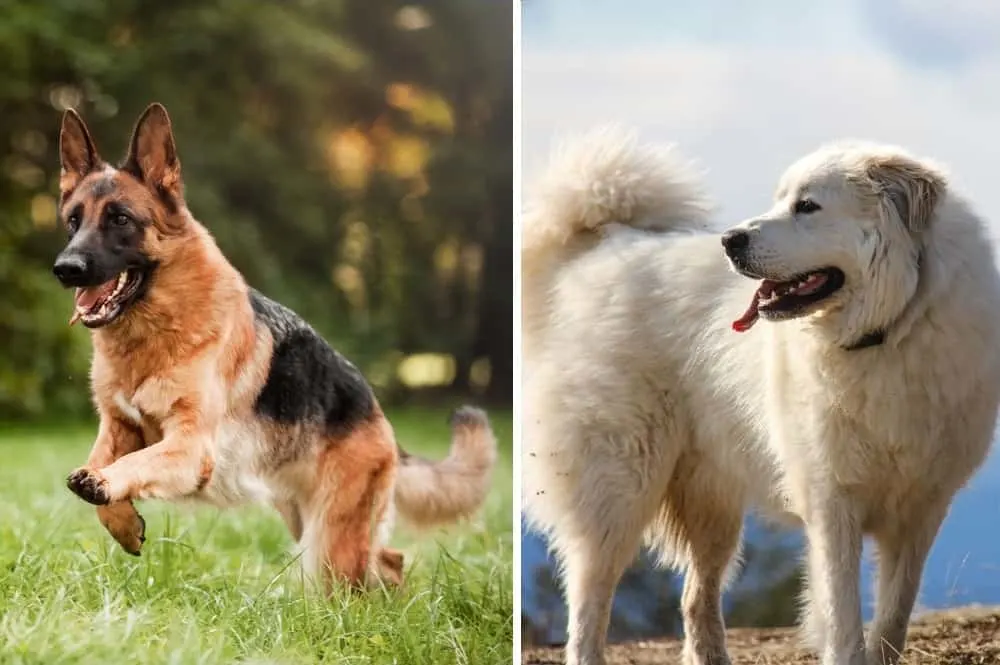
Overview of the German Shepherd
Characterized by their curiosity and high levels of intelligence, the German Shepherd is a devoted and loving dog that forms lifelong bonds with its family (or pack!).
Out of all breeds of dogs, including the Great Pyrenees, German Shepherds are known for being the most loyal breed of dogs and are extremely protective of their owners.
Due to this protective nature, German Shepherds are used for a variety of different purposes within modern-day society, including roles within the police force, the army, as guide dogs for the blind, farmers for sheepdogs, and of course, a loving household pet.
Alongside a German Shepherd’s devotion and affection for its owner, these dogs are also known for being very wary of strangers, so it’s very important to keep in mind that if you choose to welcome one into your home, he or she may not take very well to guests and visitors until given a chance to form a bond, or at the very least a relationship.
History and Origin of the German Shepherd
Just like their name suggests, the German Shepherd is a breed of dog that originated in Germany, way back in 1899. As part of the “Herding” family of dogs, German Shepherds were initially developed in order to be working dogs that could work in farmers’ fields to both herd and protect sheep from other hunting animals.
The main reason that German Shepherds were used to fulfilling this working role comes down to their natural affection and loyalty towards their owners, as well as their speed, keen sense of smell, intelligence, and, of course, their strength.
The very first dog declared to be a German Shepherd was named Hektor Linksrhein, and was discovered at a dog show that was attended by a man named Von Stephanitz.
An ex-cavalry captain and former student of a college intended for budding veterinarians, Stephanitz strongly believed that all dogs should be bred with the purpose of working, rather than being a companion animal.
For this reason, when Stephanitz laid eyes on Hektor Linksrhein for the very first time, he was taken aback at the dog’s clear and obvious traits of loyalty, affection, and intelligence, as well as its strong and powerful physical appearance.
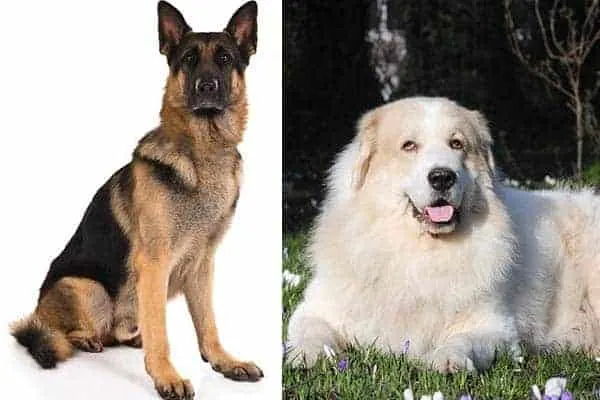
As you probably can already guess, Stephanitz purchased Hektor Linksrhein immediately and was immediately declared the first German Shepherd dog.
Not so long after purchasing Hektor Linksrhein, Stephanitz renamed the dog Horand von Grafrath and set up the Verein für Deutsche Schäferhunde, which translates to the Society for the German Shepherd Dog.
In addition to all of this, Horand was also the very first dog listed on the German Shepherd society breeding list.
From this moment onwards, the German Shepherd breed became of great interest to many breeding programs, and Hound was bred with many other breeds of dogs that Stephanitz also deemed to have many desirable “working” traits.
Over his life, Horand fathered many litters of puppies, although it is widely believed that Horand’s most desirable offspring was a dog named Hektor von Schwaben, who was bred with another one of Hordand’s offspring.
From this, a dog named Beowulf was born, who was then inbred with some of Hektor’s other offspring, which totaled to around four crosses of inbred offspring.
Finally, it is believed that Beowulf’s offspring were then bred together, which is the reason why all German Shepherds now share a genetic link.
Von Stephanitz is credited with being the creator of the German Shepherd breed of dogs due to his unwavering goal to create the perfect breed of dog designed to work as a herder and protector of sheep.
Unfortunately, during the two world wars, Germany used many German Shepherds for military applications, which saw many dogs becoming injured and even worse during their time serving for Germany.
In addition to that, after the end of WW2, there was even a brief dislike of the German Shepherd dog, although this did not last very long. Nowadays, German Shepherds are loved all over the world and are used in many working roles including K-9 units, as service dogs, for search and rescue missions, as well as being loved members of the family.
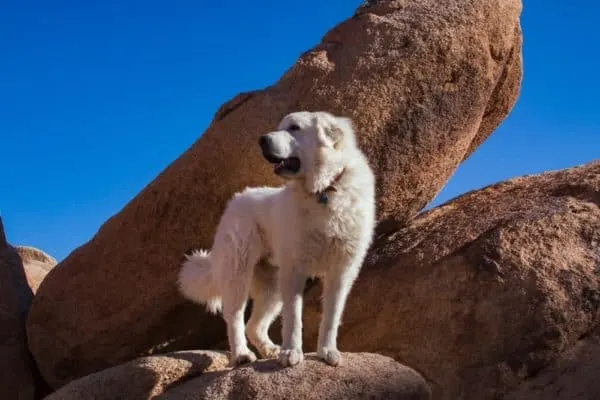
Physical Appearance of the German Shepherd
German Shepherds have a stately and noble look about them. They are a large, muscular breed with bundles of energy and speed to boot. German Shepherds have a relaxed, loping stride that is able to cover large areas of ground in just a few moments, which makes them ideal for herding sheep.
In the face, German Shepherds tend to have a square head, long muzzle, and pointed ears, as well as big, adorable inquisitive eyes. Their double coats are medium-length and consist of a thick undercoat that helps to keep them warm and their skin protected, as well as either a slightly wavy or straight outercoat.
The colors of a German Shepherd can certainly vary, although more often than not, a German Shepherd tends to usually be a mix of dark brown, golden and black fur.
In the majority of German Shepherd dogs, there will be an accumulation of dark fur around the eyes, mouths, ears, and paws, although this can also sometimes include the back area, too.
Besides this typical coloration mixture, many German Shepherds tend to have pink skin peeling on their underbellies, and this can also usually be seen inside their ears. This only adds to their cuteness, although it may be most present while they are puppies or for the first few years of their life.
As for their weight and height, German Shepherds tend to stand at around 24 inches tall, and they can weigh anywhere from around 49 to 88 pounds, although this can vary depending on their lifestyle, sex, and diet.
Personality Traits of the German Shepherd
The term “cold on the outside, warm and mushy on the inside” is a statement that certainly rings true for this breed of dog!
German Shepherds are highly affectionate dogs that form lifelong bonds with their owners. However, as we’re sure you’re already aware, German Shepherds should always be handled with care, especially when first encountering one.
Though there’s no need to fear German Shepherds, they’re not necessarily the type of dog that you would run up to pet in the street.
German Shepherds are aloof by nature, and while they’re not aggressive towards humans, they do need time to be able to assess and analyze a person before they accept you. However, once a German Shepherd has decided that you’re trustworthy, you’ll be shown a side of their personality that they reserve for only a few people.
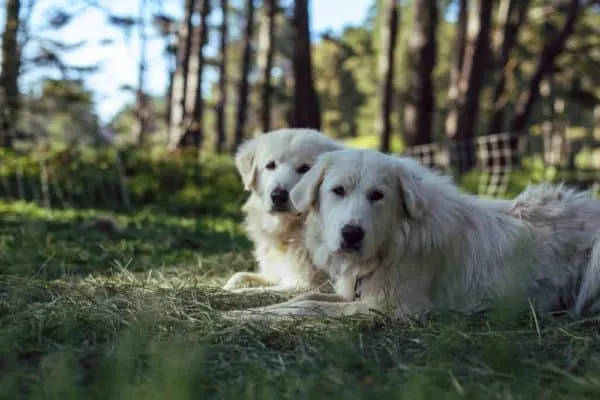
German Shepherds are very gentle and loving towards children, which is why they have been endearingly dubbed the “best family dog”.
Thanks to their highly intelligent nature, German Shepherds can be taught numerous tricks that can entertain your kids, and have bounds of energy that will have them playing for hours on end. German Shepherds are also extremely protective and often watch over children to ensure that they are safe.
German Shepherds absolutely adore their owners and other members of the family, and love to constantly be around those that they love, or deem as being part of their “pack”. They’re affectionate, playful, protective, and will truly be your friend to the end.
Nevertheless, though German Shepherds are good-natured, it’s important to always remember the main reason they were bred in the first place – and that was to be a working dog.
For this reason, you’ll need to make sure that your German Shepherd is given plenty of mental stimulation and things to stay entertained throughout the day, as well as given plenty of exercises.
If you don’t ensure that you’re meeting your German Shepherd’s needs and energy levels, you may find that your German Shepherd begins taking out their pent-up boredom on visitors, slippers, cushions, and more!
Energy Level of the German Shepherd
As we’ve already mentioned above, German Shepherds are characterized by having very high levels of energy, and this mainly comes down to the fact that they were bred to be alpha animals that could herd and guard farm animals such as sheep.
For this reason, modern-day German Shepherds are known for being bundles of energy that have extremely high activity levels.
For this reason, if you’re considering introducing a puppy German Shepherd into the family home, you’ll need to be prepared for your puppy to exhibit temperamental behavior as they learn to control and release their exceptionally high energy levels.
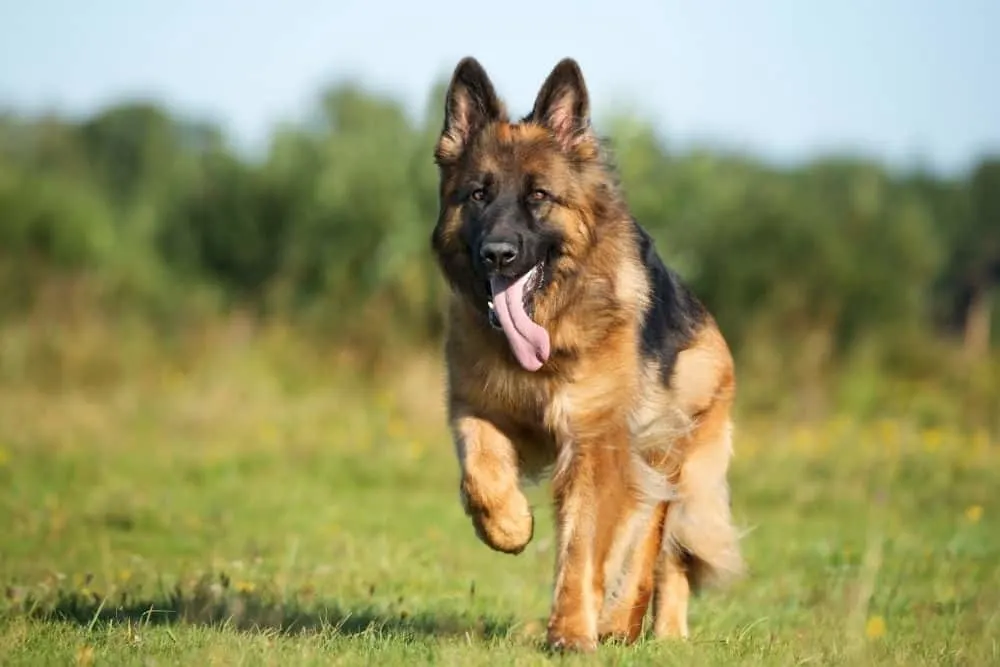
More often than not, you’ll likely find that your German Shepherd puppy goes through a period of zooming around your home, rolling around and barking, before very suddenly dropping down into their beds and going to sleep.
As your German Shepherd grows into adulthood, you’re going to likely find that these “spikes” of energy persist for the rest of their lives, although as adults their behavior is usually more subdued and characterized by longer periods of sleep, particularly throughout the day, as well as after a particularly intense playtime.
While grown, adult German Shepherds are known for being very relaxed and good-natured, even with those that they are not overly familiar with, puppy and young adult German Shepherds are known for having those extremely high levels of energy that we talked about above, which may mean that they can be a little mischievous unless properly trained.
The good news is that German Shepherds are highly intelligent and easy to train, and can even learn tricks to entertain both themselves and even your children.
Alongside training, many owners of German Shepherds find that regular walks to the dog park are very effective ways of helping their dogs burn off any steam, while also being able to socialize with other dogs.
As a side note, we strongly recommend that you begin socializing with your German Shepherd as soon as you can, as this will help them to become more friendly and less aloof around other dogs.
Besides regular walking, German Shepherds love to play and will require lots of hard toys to play with, as well as lots of mental stimulation so that they do not get bored and begin being naughty due to boredom.
With all of that being said, German Shepherds are quite high-maintenance dogs. So, if you don’t feel as though you will have enough time throughout your days to be able to spend a lot of time engaging with your German Shepherd, then it may not be a good idea to adopt one of them into your home.
Potential Health Problems of the German Shepherd
Just like with any other type of dog breed, German Shepherds can be at risk of developing certain health risks, especially health conditions that are typically associated with large-breed dogs, which is what the German Shepherd is.
To give you an idea of the potential health problems that a German Shepherd may develop, let’s take a look at the most common ailments and illnesses below:
- Bloating: German Shepherds are more prone to bloating than other types of dog breed, so you may need to alter their diet accordingly.
- Cataracts: Another health issue that German Shepherds tend to be prone to developing is cataracts.
- Joint problems: Due to their size, many German Shepherds are at risk of developing a degenerative joint disease, as well as suffering from general aches and pains.
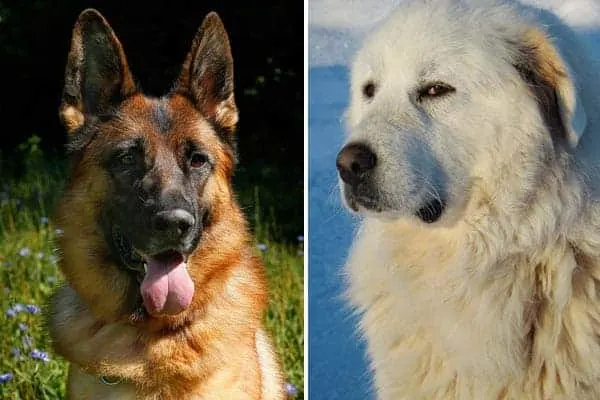
Besides these common illnesses and ailments linked to large-breed dogs, German Shepherds can also suffer from illnesses that are unique to their breed, including hemophilia, diabetes, and even separation anxiety.
For this reason, it is strongly recommended that German Shepherd owners frequently schedule appointments with their vet, so that regular checkups can be made – and this commitment is certainly something worth thoroughly thinking about before buying a little German Shepherd pup.
However, it is worth noting that, though German Shepherds are prone to developing diabetes, this is more to do with their lifestyle and diet, which means that the likelihood of it occurring can be controlled.
Due to the size of the German Shepherd, it’s important to note that the average lifespan of a German Shepherd is around 10 years, although this time frame can vary on either side of that figure.
As German Shepherd ages, it is very likely that cataracts and joint problems will begin to occur, and these are two health problems that are unfortunately hard to prevent.
German Shepherds are also prone to developing arthritis due to their weight and size, though this health issue often only arises in later life, which means that young German Shepherds will be able to bound around and play to their heart’s content.
Water activities are one of the best ways for young at heart German Shepherds to burn off steam and play around as they once did as puppies and young adults. Swimming and other water activities will allow older German Shepherds to get all the exercise they need without having to put any strain on their joints.
What You Should Feed a German Shepherd
Seeing as German Shepherds can be prone to developing diabetes, as well as suffering from joint problems, it’s very important that a German Shepherd is given a diet that has a healthy balance of minerals, vitamins, proteins, and fats.
Though it might be tempting to purchase a bowl of carby kibble, this will only serve to hurt a German Shepherd in the long run, especially due to the types of health issues they are most likely to develop throughout their life.
A healthy German Shepherd will need to be fed raw meats alongside nutrient-rich vegetables such as sweet potatoes, carrots, spinach, and more.
You will also need to make sure that you are avoiding foods that contain lots of filler and salt, as this will put your dog at risk of developing diabetes and other health ailments.
The diet of a German Shepherd is something that you will need to seriously consider prior to purchasing one, as it will be your duty as its owner to make sure that you are feeding him the right foods.
Overview of the Great Pyrenees
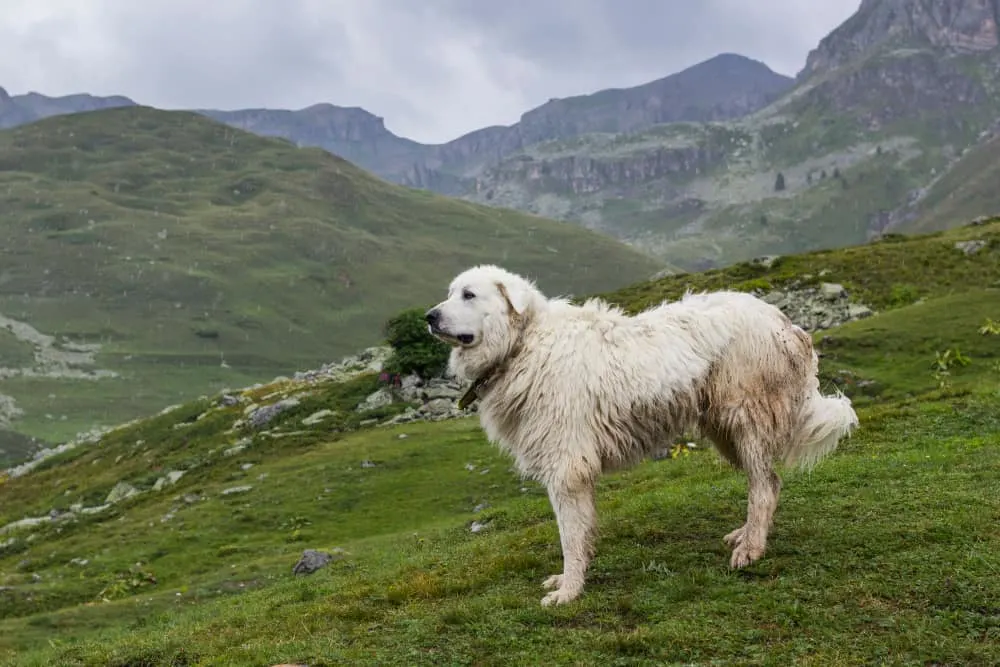
The Great Pyrenees is a very well-mannered breed of dog that is characterized by being loyal, affectionate, and protective.
The earliest origins of the Great Pyrenees date back to the Pyrenees mountains, where these mellow dogs were used as working dogs to help protect shepherds’ flocks from being attacked by wolves and bears native to the area.
In modern-day life, Pyrs are known as being excellent guardians of the home and family and are particularly protective of children. They are very strong mountain dogs, and can sometimes stand up to 33 inches at the shoulder, so it should come as no surprise to hear that these dogs can quite often weigh more than 100 pounds!
With a stately appearance, Pyrs have the ability to suddenly spring into action whenever they see a threat and are known for their elegant, graceful gait that can reach impressively high speeds.
In the home, Pyrs have almost a zen-like attitude that makes them very ideal as companions as, even though they’re prone to bursts of playfulness, Pyrs most commonly like to chill out and sleep.
History and Origin of the Great Pyrenees
The Great Pyrenees, which is otherwise known as the Pyrenean Mountain Dog, is a large-breed working-dog much like the German Shepherd. It is widely considered that the Great Pyrenees originated from Asia, though this isn’t a 100% fact due to the lack of records at that time.
Initially, the Great Pyrenees were used as livestock guardian dogs among the Pyrenees Mountains by Romans that traveled from Asia.
However, there are some people who believe that the Great Pyrenees actually originated from France, where it is officially known as the Chien de Montagne des Pyrenees, or more casually as simply Patou.
This is often backed up by the fact that the Great Pyrenees dog looks very similar to the Maremmano-Abruzzese, which is a sheepdog native to Italy, and the Kuvasz dog, which is native to Hungary.
For centuries, these dogs, including the Great Pyrenees, were used by farmers and shepherds throughout the Pyrenean region in order to protect their sheep and other flocks from being hunted by wolves and other hunting animals.
More often than not, the Great Pyrenees were often given a wolf collar made of iron, studded with very long nails. This was given to the Great Pyrenees dogs to help protect them from being attacked by wolves, as well as to give them a distinct advantage in the event that they had to fight one.
Sometimes, the Great Pyrenees dog was often used to protect flocks of sheep alongside smaller breeds of dog, including the Pyrenean Sheepdog, who would assist in herding the flock.
During this time, the Great Pyrenees dog was also used to help smuggle banned goods from France, across the Pyrenees in Spain.
These highly intelligent dogs were given packs full of contraband goods that were strapped across their backs, and then they would be left to make the journey to Spain, where they would be able to travel down routes that humans would have been unable to. This allowed the dogs to cross the borders without being caught. Pretty smart, right?
Nevertheless, just like their name suggests, the Great Pyrenees was destined for greatness, and soon became a loved favorite of the French court during the 17th century.
A French noblewoman named Madame de Maintenon, and Louis, Dauphin of France took a Great Pyrenees Dog to the court run by King Louis XIV at the time. The King instantly became enthralled with the breed, and was soon renamed in France as the Royal Dog of France!
Most commonly during the 17th century, the Great Pyrenees Dog was used by members of the French court and other French nobility to guard their chateaus, most commonly in the South region of France.
However, they were not used by working-class Frenchmen during the 17th century, as the Great Pyrenees dog was of royal stature, and in turn exclusive to French royalty.
After the turn of the century, though, it is widely accepted that many French settlers migrated to Canada, and is seen as one breed of dog that helped to create the popular Newfoundland breed of dog. In addition to the Newfoundland dog, it is also believed that the Great Pyrenees dog also helped to create the Leonberger breed of dog.
Unfortunately, at the very beginning of the 20th century, there was a mass culling of wolves in the Pyrenees area, which led to the Great Pyrenees veering on extinction as there was no longer a demand for them.
By chance of luck, many shepherds that lived in the Pyrenees sold their Great Pyrenees puppies to British tourists, and this was how the breed managed to make its way across the sea to the United Kingdom.
Thanks to this, the breed was then registered as an official breed with the Kennel Club, although it was still on the brink of extinction due to a lack of interest.
Luckily, a French aristocrat named Bernard Senac-Lagrange took it upon himself to help bring the breed back to a healthy population, and save it from going extinct. To do this, he traveled to the Pyrenees mountains and rounded up a select group of Great Pyrenees dogs living in the area to create a group that he could then breed.
For this reason, Senac-Lagrange has been credited with being the reason why the Great Pyrenees breed did not go extinct.
Ever since, the breed has gone from strength to strength and has even become the star of the show ring across the United States, United Kingdom, and Canada. So much so that during 1935, a new breed standard (which had many differences to the original breed standard) became commonplace in competitions and shows.
This new breed standard consisted of many exaggerated features that negatively affected healthy functioning, and thus was banned.
The British Pyrenean Mountain Dog club in 2011 cracked down on this breed standard and called for a return to a breed standard where Great Pyrenees dogs were muscular and had waterproof coats that made them ideal as working dogs in the 17th century and even earlier.
Nowadays, a breed standard closest to the original Great Pyrenees dogs that lived in the Pyrenees mountain are used as companion dogs, show dogs, and even sometimes service dogs.
Physical Appearance of the Great Pyrenees
The Great Pyrenees are very large dogs that many people feel resemble a Golden Retriever in the face. They are extremely muscular, have a regal look, and are most commonly characterized by a thick, double-coat.
Specifically intended to help keep them warm during the days that they roamed the mountains of the Pyrenees, Pyrs have an outer coat that is very long and coarse (and usually either wavy or wiry) as well as an undercoat that is thick and soft.
Their big eyes are dark brown, and their coat colors can vary from solid white to white which has patches of tan and yellow interspersed throughout.
Due to their large sizes (even bigger than a German Shepherd), it’s very important to keep in mind that these dogs do not fare well when they are cooped up, which means that it might not be a good idea to buy one if you do not have a large backyard or access to local parks where your Great Pyrenees will be able to stretch their legs and burn off energy.
This also means that Great Pyrenees dogs are not suitable for apartments or similar, smaller living spaces.
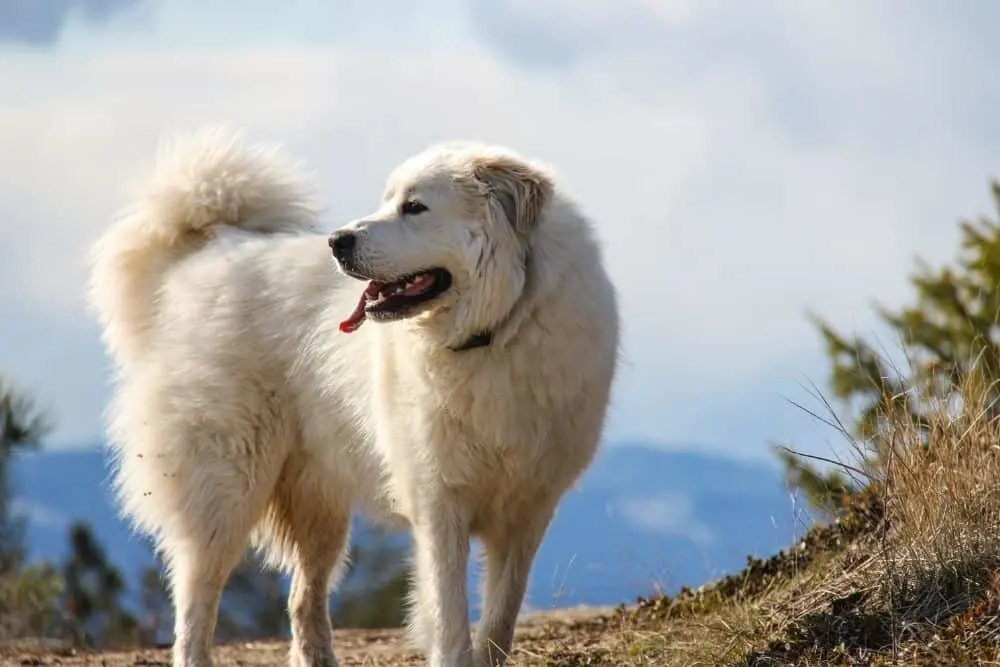
Personality Traits of the Great Pyrenees
The Great Pyrenees are generally a very well-mannered, good-natured breed of dog that is known for being highly affectionate towards their owners, including other members of their family. A true family dog, the Great Pyrenees loves children, and are known for being very gentle and caring towards them.
Alongside their mellow nature, Pyrs are also extremely trustworthy and loving and are the type of dogs that will enjoy doing whatever their owners are doing.
Nevertheless, if the need arises, Pyrs will not hesitate to protect their territory if they feel threatened by someone or another animal. In addition to being highly territorial, Great Pyrenees dogs are extremely loyal and protective of their family and will do anything to defend those who are part of their pack.
This unwavering loyalty and nobleness of Pyrs can sometimes be an issue, especially if they have not been properly trained, as some Pyrs have been known to accidentally try to defend their home and family from friends and visiting family members.
The independent nature of the Great Pyrenees also can’t go unmentioned. As these dogs were specifically bred to spend long periods of time by themselves alone in the Pyrenees mountains, Pyrs can be more difficult to train than German Shepherds, as they have an independent streak that can make obedience training difficult.
For this reason, it’s best to train them while they are still puppies. Nevertheless, the independence of Pyrs does come with benefits, as these dogs are far less likely to develop separation anxiety than German Shepherds are.
Energy Level of the Great Pyrenees
Unlike the playful German Shepherd, the Great Pyrenees is not an overly high-energy dog and instead prefers to lounge around and relax. So much so, that your Pyr will only require around 20-30 minutes of exercise per day to maintain health and wellbeing.
Though Pyrs can be prone to bursts of energy (especially as puppies and young adults) the majority of Pyrs are very mellow in nature and prefer to kick back and chill out, rather than run around and cause havoc.
However, that’s not to say that Pyrs are lazy or dislike exercise, because that’s far from the case. Pyrs love going on hikes and being outdoors, and are known for enjoying a range of hard and soft toys to snuggle and chew on while relaxing in the house.
Plus, besides enjoying the occasional play, Great Pyrenees dogs also love to cuddle their owners and love nothing more than to be in their company.
Potential Health Problems of the Great Pyrenees
Just like the German Shepherd, Pyrs are also at risk of developing certain health issues and conditions throughout the course of their lives, and this often comes down to their large sizes.
Most commonly, Pyrs are at risk of developing joint problems, including hip dysplasia, as well as heart problems. Pyrs are also at risk of eye problems, kneecap dislocation, certain bone cancers, as well as a tendency to bloat.
It’s important to note that not all Pyrs will develop these health conditions, but knowing this information will help you when you are searching for an ethical and licensed Pyr breeder.
What You Should Feed the Great Pyrenees
Seeing as Pyrs are between the large to the giant spectrum of dog breed sizes, Pyrs will benefit from a similar diet to that of German Shepherds.
Both types of dog breed are at risk of developing similar health conditions, so you’ll need to make sure that you’re feeding your Pyr a diet that is well-balanced, and contains nutrients, vitamins, minerals, proteins, and fats.
Besides raw meat, fish, and vegetables (such as sweet potatoes and spinach) you can also choose to feed your Pyr a large-breed dog food formula to help bulk each meal out.
Additionally, Pyr puppies will also need to be fed puppy food that is designed for large to giant breeds of dog for at least the first two years of life, as Pyrs take longer to mature than other breeds, including German Shepherds.
As a side note, as Pyrs are prone to bloating, we recommend feeding them little and often, rather than spacing out larger meals throughout the day.
So, Which One is Right for You?
So, there you have it! You made it to the finish line. After reading through this article, we hope that you now have a clearer idea of which breed of dog is right for you and your family.
To summarise what we’ve talked about above, a German Shepherd dog might be the best fit for you if you’re very active, have enough time throughout the day to dedicate to your dog, as well as have the patience to deal with their temperamental nature, especially as a puppy and young adult.
On the other hand, a Great Pyrenees dog might be the best fit for you and your family if you have a large home or large backyard (due to their size) and won’t mind spending time throughout the day keeping your dog company.
Though they are mild-natured, these dogs have lots of energy and like to run around, and can become frustrated when cooped up for longer periods of time.
Regardless of which breed of dog you make a member of the family, both the German Shepherd and Great Pyrenees require love, affection, and plenty of exercise as both of these dogs have been bred to herd and guard flocks.
You will need to make sure that you are prepared to undertake training, make sure that they are getting a healthy and nutritious diet, and that they are regularly visiting their vets.
Nevertheless, both the German Shepherd and Great Pyrenees are dogs that are highly intelligent, affectionate, and loyal to no end. Both breeds are also very good around children and make excellent watchdogs, which means that both would make a wonderful addition to your family. Thank you for reading!


















